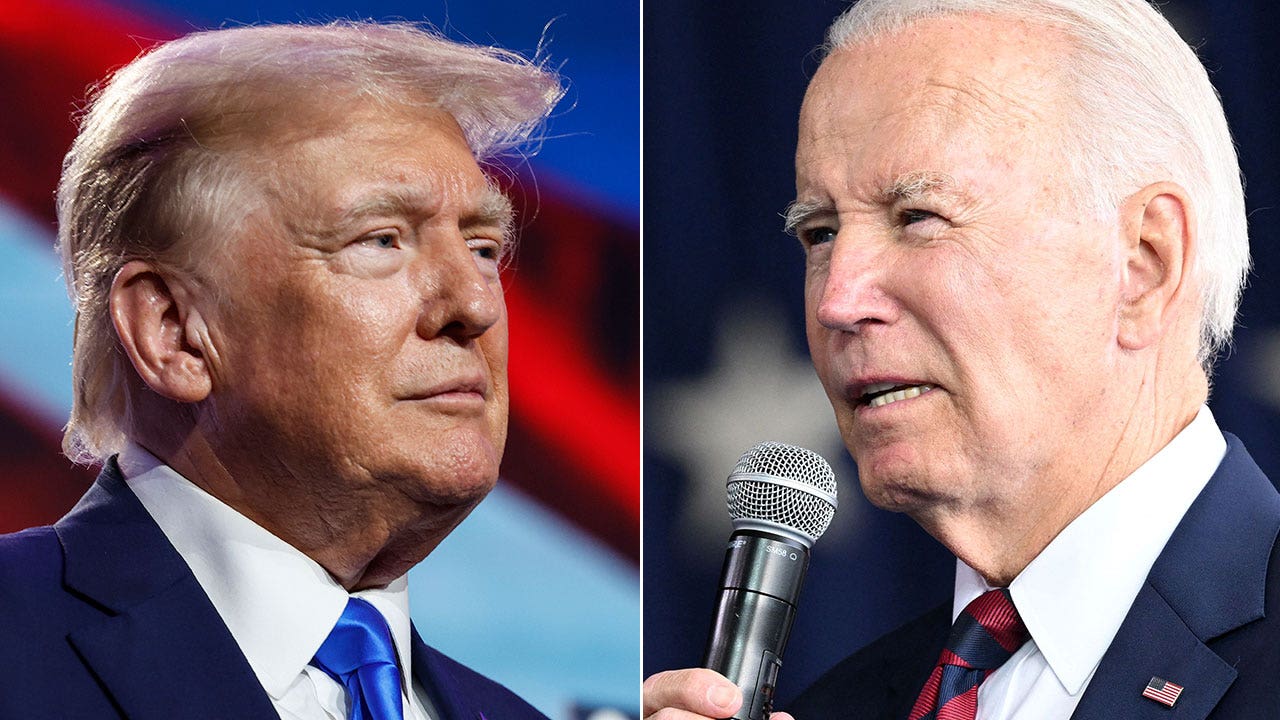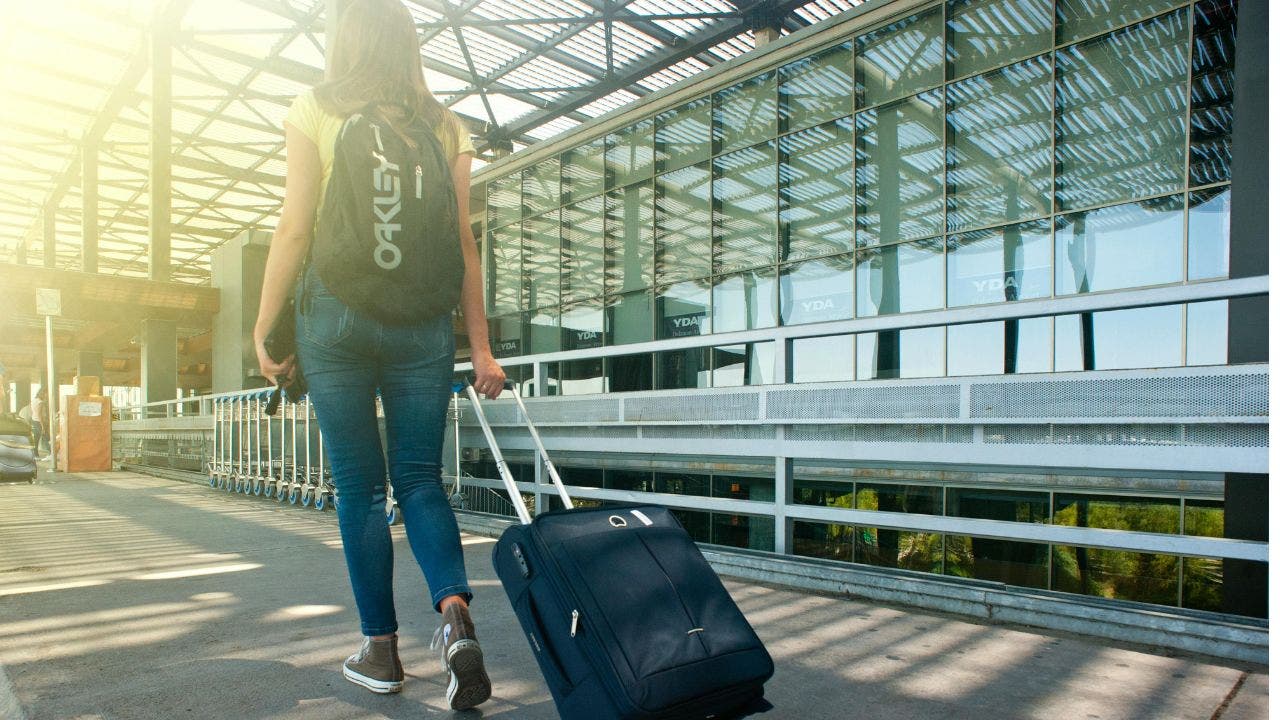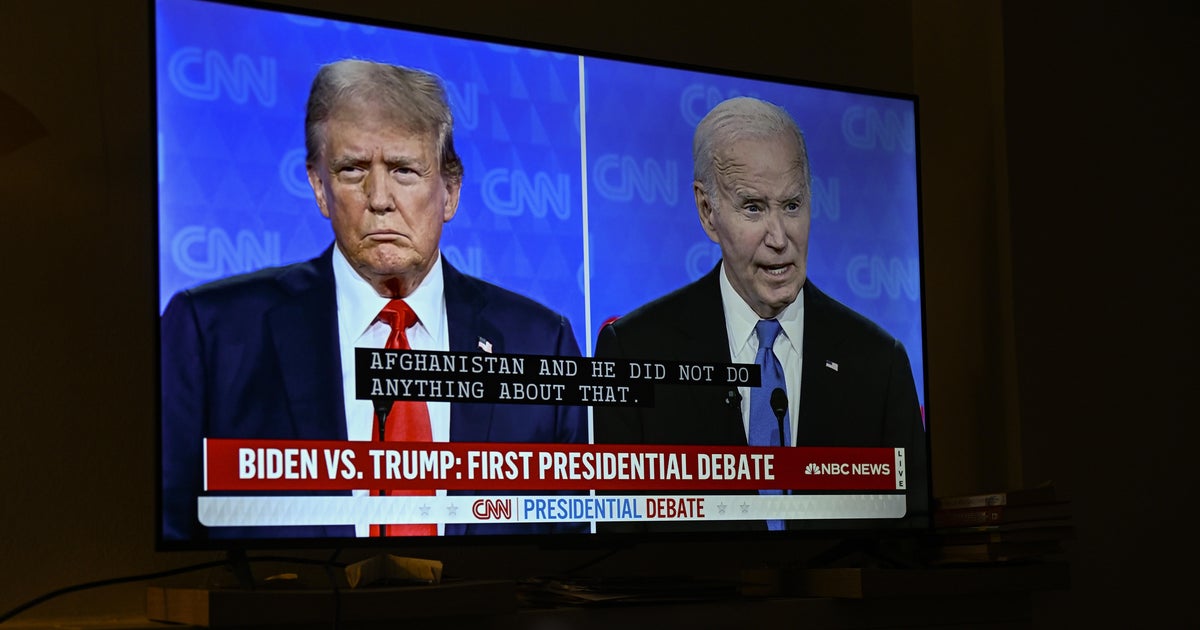World
Kenyan police confront protesters day after president withdraws tax increase bill
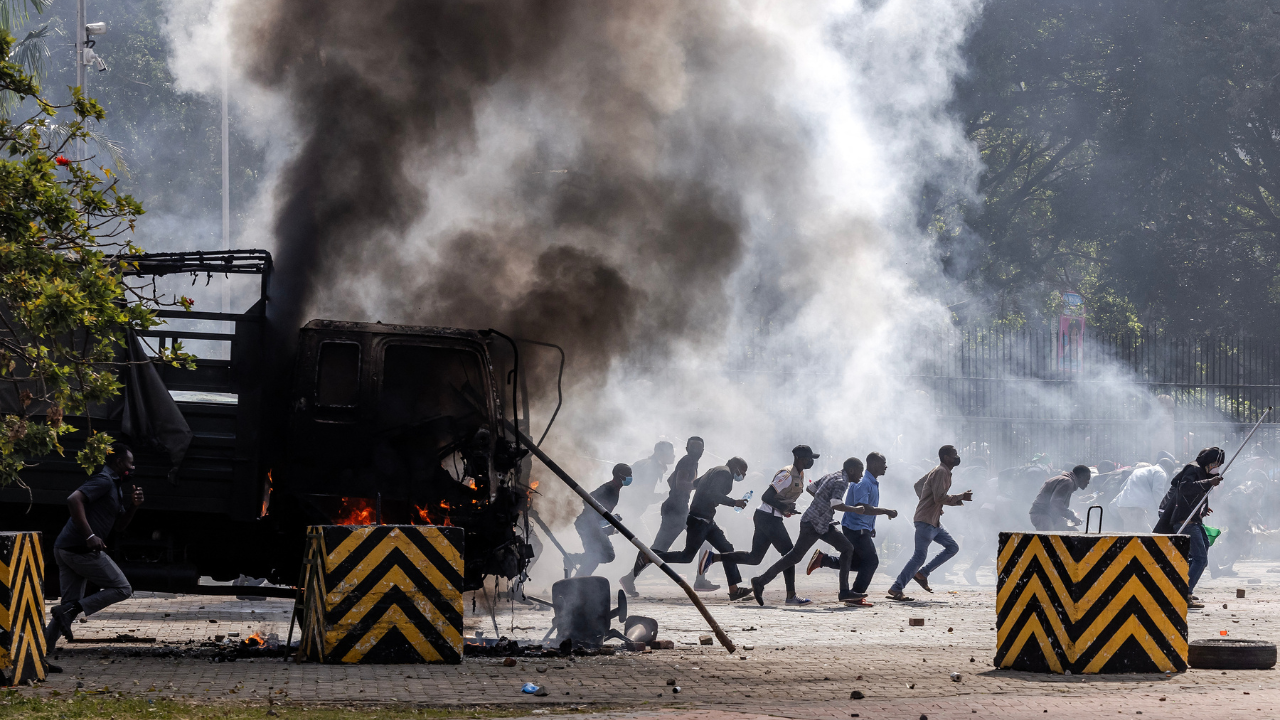
- Protests have continued across Kenya despite President William Ruto’s withdrawal of a controversial tax hike bill.
- Kenyan police on Thursday fired teargas at protesters in Nairobi and blocked roads to the presidential palace.
- Crowds in Mombasa, Kisumu and other cities have demanded President Ruto’s resignation.
Kenyan police fired teargas at dozens of protesters in Nairobi and blocked off roads to the presidential palace on Thursday as crowds took to the streets again nationwide, even after the president bowed to pressure to withdraw a tax hike bill.
Crowds called for President William Ruto to go further and step down in the capital, Mombasa, Kisumu and other centers, though the turnout was well down from the height of the mass rallies sparked by the tax measures over the past week.
Ruto withdrew the legislation including new taxes and hikes on Wednesday, a day after at least 23 people were killed in clashes at protests sparked by his plans, and parliament was briefly stormed and set alight.
KENYA’S PRESIDENT BACKTRACKS ON CONTROVERSIAL TAX INCREASES AFTER DEADLY PROTESTS SHAKE NATION
He is grappling with the most serious crisis of his two-year-old presidency as the youth-led protest movement has grown rapidly from online condemnations of the tax hikes into mass rallies demanding a political overhaul.
Protesters run to take cover outside the Kenyan Parliament after storming the building during a nationwide strike to protest against tax hikes in downtown Nairobi, on June 25, 2024. Kenyan police fired teargas at dozens of protesters and blocked off roads to the presidential palace on Thursday as crowds took to the streets again nationwide, even after the president bowed to pressure to withdraw a tax hike bill. (LUIS TATO/AFP via Getty Images)
Dropping the bill has also hit plans to reduce the budget deficit and borrowing, as demanded by lenders including the International Monetary Fund.
Seven people were rushed to hospital with gunshot wounds in the town of Homa Bay in western Kenya on Thursday, Citizen TV reported, without going into further detail. Police commander Hassan Barua said he had sent officers to check on the report.
In Nairobi, police and soldiers patrolled the streets and blocked access to State House. Police fired teargas to disperse several dozen people who had gathered in the center of the city.
UN-BACKED CONTINGENT OF FOREIGN POLICE ARRIVES IN HAITI AS KENYA-LED FORCE PREPARES TO FACE GANGS
Doctors volunteer group Medics for Kenya said its staff at the Jamia Mosque/Crescent hospital had been hit by teargas, and that it condemned in “the strongest terms possible violence meted out on our volunteer medical teams”.
Reuters reporters saw army vehicles on the streets after the government deployed the military to help police.
Elsewhere, hundreds of protesters gathered in the port city of Mombasa and in the western city of Kisumu, local television footage showed, although those gatherings appeared peaceful.
“We are only coming here so that our voice can be heard, us as Gen Z, us as Kenyans, we are one,” said Berryl Nelima in Mombasa. “So the police should stop killing us, we are just peaceful protesters, we are unarmed.”
The protest movement has no formal leadership structure and has largely responded to messages, banners and slogans on social media. Posts on Thursday suggested protest supporters were divided on how far to carry the demonstrations.
“Let’s not be foolish as we fight for a better Kenya,” Boniface Mwangi, a prominent social justice activist, said in an Instagram post.
He voiced support for demonstrations on Thursday but opposed calls to invade State House, the president’s formal offices and residence, a move that he said could spur more violence and be used to justify a crackdown.
KENYAN PROTESTERS VOW TO CONTINUE DEMONSTRATIONS AFTER VIOLENT CLASHES LEAVE 23 DEAD
While some protest supporters said they would not demonstrate on Thursday as the finance bill had been scrapped, others pledged to press on, saying only Ruto’s resignation would satisfy them.
“Right now is not about just the finance bill but about #RutoMustGo,” political activist and protester Davis Tafari told Reuters in a text message. “We have to make sure that Ruto and his MPs have resigned and fresh elections are held … We occupy State House for dignity and justice.”
Eli Owuor, 34, from Kibera, an informal settlement and a traditional hotbed of protests, also said he was prepared to join a push on to State House.
“We may just need to visit Zakayo today in his house to prove that after parliament we can occupy State House,” he said, using a nickname protesters have given to Ruto that references a biblical tax collector viewed as corrupt.
DIALOGUE, AUSTERITY ARE NEXT STEPS
In a speech on Wednesday, Ruto defended his push to raise taxes on items such as bread, cooking oil and diapers, saying it was justified by the need to cut Kenya’s high debt, which has made borrowing difficult and squeezed the currency.
But he acknowledged that the public had overwhelmingly rejected the finance bill. He said he would now start a dialogue with Kenyan youth and work on austerity measures, beginning with cuts to the budget of the presidency.
The International Monetary Fund, which has been urging the government to cut its deficit to obtain more funding, said it was closely monitoring the situation in Kenya.
“We are deeply concerned about the tragic events in Kenya in recent days,” the IMF said in a statement. “Our main goal in supporting Kenya is to help it overcome the difficult economic challenges it faces and improve its economic prospects and the well-being of its people.”
Ratings agency Moody’s said the shift in focus to cutting spending rather than boosting revenue will complicate the disbursement of future IMF funding and slow the pace of fiscal consolidation.
Analysts at JPMorgan said they had maintained their forecasts for a deficit of 4.5% of GDP in FY2024/2025, but acknowledged the government and IMF targets could be revised in light of recent developments.
They said the Central Bank of Kenya was unlikely to begin cutting rates until the final quarter of this year.

World
Bolivia grapples with aftermath of failed coup attempt as nation strives to restore stability
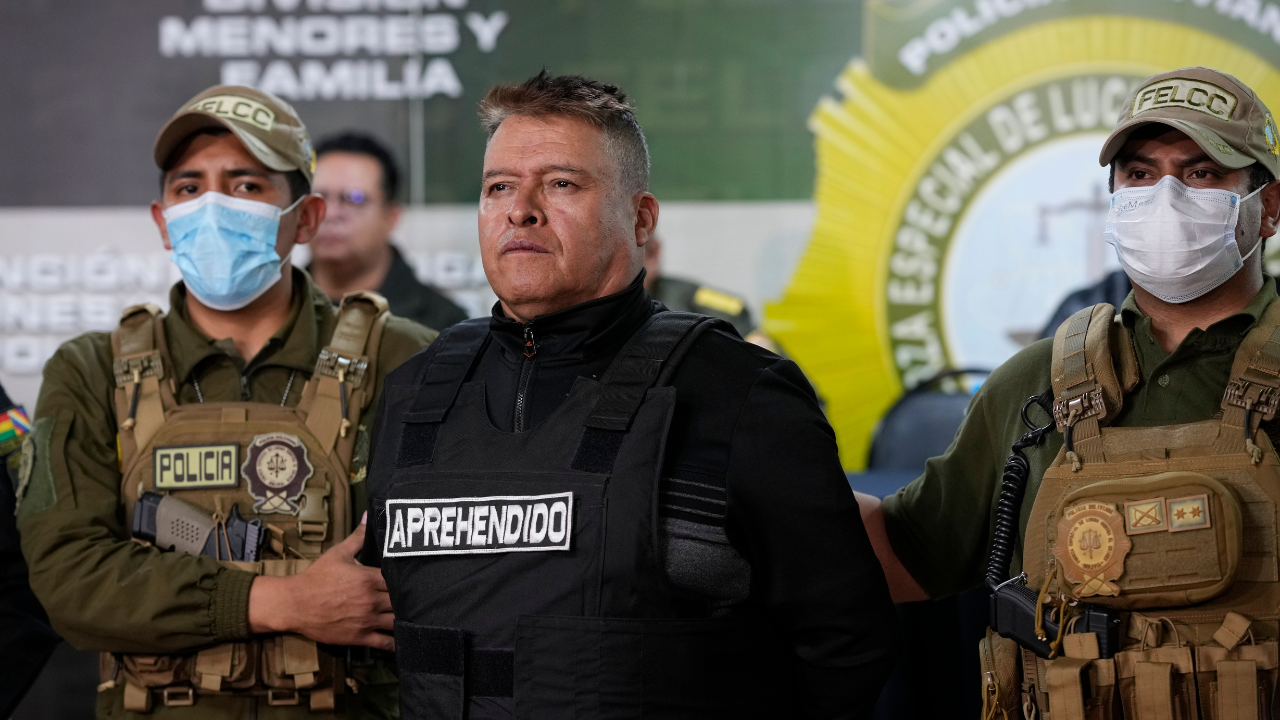
- Bolivia has been left reeling after troops, led by General Juan José Zúñiga, briefly seized the presidential palace in La Paz during an attempted coup.
- Military forces seized control of La Paz using armored vehicles and tear gas against protesters.
- Authorities arrested Zúñiga as his soldiers retreated from central La Paz.
Calm returned to Bolivia’s capital on Thursday after troops led by a top general stormed the presidential palace, then quickly retreated, tumultuous scenes that threatened to pitch the long-troubled South American democracy into chaos.
The nation of 12 million watched in shock and bewilderment Wednesday as Bolivian military forces appeared to turn on the government of President Luis Arce, seizing control of the capital’s main square with armored personnel carriers, crashing a tank into the palace and unleashing tear gas on protesters who flooded the streets.
The country’s army chief, Gen. Juan José Zúñiga, addressed a scrum of TV reporters from the palace, vowing to “restore democracy,” replace the cabinet, and free political prisoners.
BOLIVIAN PRESIDENT SURVIVES FAILED COUP, CALLS FOR ‘DEMOCRACY TO BE RESPECTED,’ ARMY GENERAL ARRESTED
But as opposition leaders condemned the apparent coup attempt, it became clear that the coup had no meaningful political support. Arce refused to relent and named a new army commander, who immediately ordered troops to stand down, ending the rebellion after just three chaotic and head-snapping hours. Hundreds of Arce’s supporters rushed the square outside the palace, waving Bolivian flags, singing the national anthem and cheering.
Bolivian police hold the detained Juan Jose Zuniga, former general commander of the Army, in La Paz, Bolivia, on June 26, 2024. Calm returned to Bolivia’s capital on Thursday after troops led by a top general stormed the presidential palace, then quickly retreated, tumultuous scenes that threatened to pitch the long-troubled South American democracy into chaos. (AP Photo/Juan Karita)
“Here we are, firm, in the presidential palace, to confront any coup attempt,” Arce said after facing down Gen. Zúñiga, calling on Bolivians to mobilize in defense of democracy.
Authorities swiftly arrested Zúñiga as his soldiers retreated from central La Paz, crushing the apparent coup attempt and defusing the latest crisis in a country wracked by a bitter political rivalry and economic crisis.
“Their goal was to overturn the democratically elected authority,” Government Minister Eduardo del Castillo told journalists in announcing the arrests of Zúñiga along with an alleged co-conspirator, former navy Vice Adm. Juan Arnez Salvador.
BOLIVIAN PRESIDENT WARNS ‘IRREGULAR’ MILITARY DEPLOYMENT UNDERWAY IN CAPITAL, RAISING COUP FEARS
The short-lived rebellion followed months of mounting tensions between Arce and his one-time ally, former President Evo Morales. Bolivia’s first Indigenous president, Morales remains a global leftist icon and towering figure in national politics years after mass protests that prompted him to resign and flee in 2019 — an ouster his supporters view as a coup.
Since returning from exile, Morales has staged a dramatic political comeback. Threatening to challenge Arce in 2025 primaries, Morales has sparked an unprecedented rift in their ruling socialist party. The feud has paralyzed efforts to resolve a spiraling economic crisis, with the country’s foreign currency reserves diminishing, its natural gas exports plummeting and its currency peg collapsing.

Police hold the detained Juan Arnez Salvador, ex-commander general of the Bolivian Navy, in La Paz, Bolivia, on June 26, 2024. (AP Photo/Juan Karita)
As police in riot gear set up blockades outside the presidential palace, Bolivians — though no stranger to political conflict in a country that has witnessed some 190 coups by one count — thronged ATMs, formed long lines outside gas stations and emptied shelves in grocery stores and pharmacies.
Flanked by the newly appointed military chiefs late Wednesday, Defense Minister Edmundo Novillo sought to reassure the rattled public and shed light on what had happened.
The turmoil began earlier this week, Novillo said, when Arce dismissed Zuñiga in a private meeting Tuesday over the army chief’s threats to arrest Morales if he proceeded with his presidential bid in 2025. In their meeting, Novillo said that Zuñiga gave officials no indication he was preparing to seize power.
“He admitted that he had committed some excesses,” Novillo said of Zuñiga. “We said goodbye in the most friendly way, with hugs. Zuñiga said that he would always be at the side of the president.”
The frantic palace takeover began hours later. Tailed by armored vehicles and supporters, Zuñiga burst into government headquarters and declared that he was sick of political infighting. “The armed forces intend to restore the democracy,” he said.
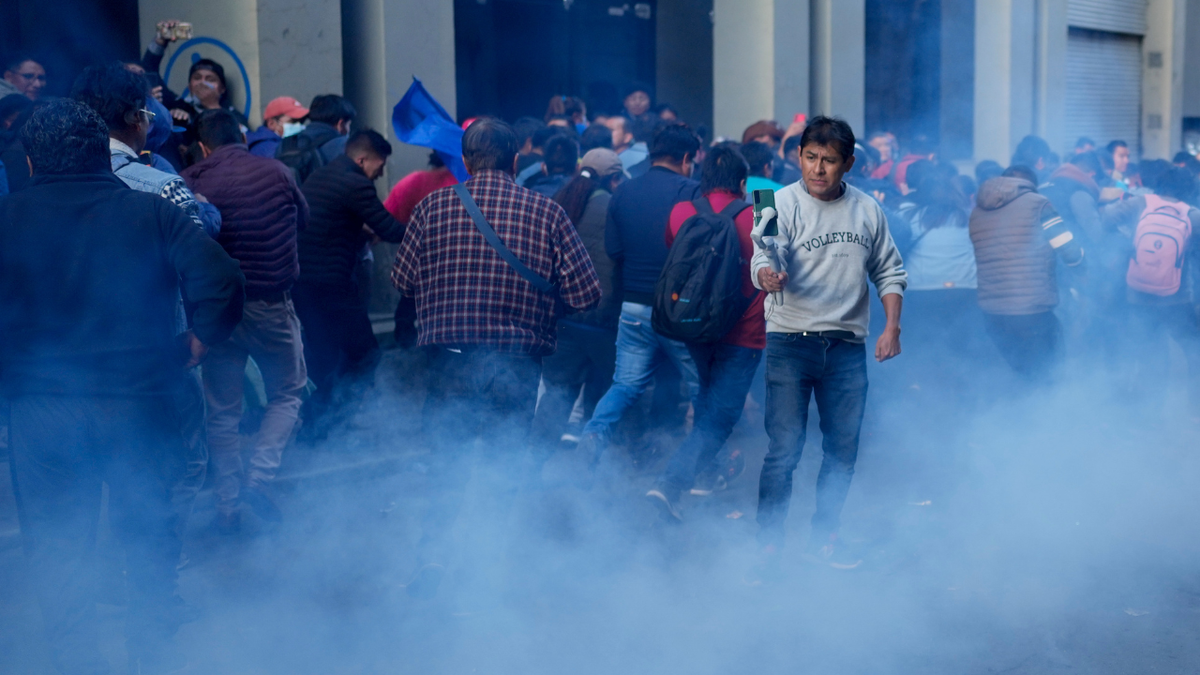
Supporters of Bolivian President Luis Arce enter Plaza Murillo amid tear gas launched by military police in La Paz, Bolivia, on June 26, 2024. (AP Photo/Juan Karita)
Members of the country’s fragmented opposition, which Zuñiga claimed to support, rejected the coup before it was clear it had failed. Former interim President Jeanine Áñez, detained for her role in Morales’ 2019 ouster, said that soldiers sought to “destroy the constitutional order” but appealed to both Arce and Morales not to run in the 2025 elections.
The mutiny by a lifelong member of the military with a low political profile stirred confusion. Just before his arrest, Zúñiga claimed that President Arce himself had asked the general to storm the palace in a ploy to boost the embattled leader’s popularity.
“The president told me: ‘The situation is very screwed up, very critical. It is necessary to prepare something to raise my popularity,’” Zúñiga quoted the Bolivian leader as saying.
Justice Minister Iván Lima denied Zúñiga’s claims, insisting the general was lying to justify his actions. Prosecutors will seek the maximum sentence of 15 to 20 years in prison for Zúñiga on charges of “attacking the constitution,” he said.
Analysts said that, more than anything, Wednesday’s events underscored the weakness of Bolivia’s democratic institutions.
“This grants control to the military and erodes democracy and is an important signpost that the problems of the 2019 coup have not been addressed,” said Kathryn Ledebur, director of the Andean Information Network, a Bolivia-based research group. “Bolivia’s democracy remains very fragile, and definitely a great deal more fragile today than it was yesterday.”
World
Caribbean braces for ‘very dangerous’ Hurricane Beryl

DEVELOPING STORYDEVELOPING STORY,
Storm begins to shut down southeast Caribbean amid urgent pleas from government officials for people to take shelter.
Much of the southeast Caribbean is on alert as Beryl strengthens into the first hurricane of the 2024 Atlantic season, with forecasters warning of a “very dangerous” Category 3 storm.
The US National Hurricane Center (NHC) said Beryl – churning in the Atlantic Ocean about 675km (420 miles) east of Barbados – at 12:30 GMT on Sunday was expected to bring “life-threatening winds and storm surge” when it reaches the Windward Islands early on Monday.
Barbados, Saint Lucia, Saint Vincent and the Grenadines, and Grenada were all under hurricane warnings, while tropical storm warnings or watches were in effect for Martinique, Tobago and Dominica, the NHC said in its latest advisory.
Cars were seen lined up at filling stations in the Barbadian capital, Bridgetown, while supermarkets and grocery stores were crowded with shoppers buying food, water and other supplies. Some households were already boarding up their properties.
Beryl is now only the third Category 3 hurricane ever recorded in the Atlantic in June, following Audrey in 1957 and Alma in 1966, according to hurricane expert Michael Lowry.
“Only five major [Category 3+] hurricanes have been recorded in the Atlantic before the first week of July. Beryl would be the sixth and earliest this far east in the tropical Atlantic,” Lowry posted on X.
‘Devastating wind damage expected’
The NHC said by about 5am (09:00 GMT) on Sunday, Beryl’s maximum sustained wind speed had increased to nearly 100mph (160kmph) with higher gusts. Such a powerful storm forming this early in the Atlantic hurricane season – which runs from early June to late November – is extremely rare, experts said.
“Hurricane conditions are expected in the hurricane warning area beginning early on Monday,” the NHC said, warning of heavy rain, flooding and storm surge that could raise water levels as much as 9 feet (2.7 metres) above normal.
“Devastating wind damage is expected where the eyewall of Beryl moves through portions of the Windward Islands,” the NHC added, indicating wind speeds in some locations could be 30 percent stronger than those listed in their advisory.
Beryl is likely to pass just south of Barbados early on Monday and then head into the Caribbean Sea as a major hurricane on a path towards Jamaica. It is expected to weaken by midweek but remain a hurricane as it heads towards Mexico.
Forecasters warned of a life-threatening storm surge in areas where Beryl will make landfall, with up to 6 inches (150mm) of rain for Barbados and nearby islands.
The US National Oceanic and Atmospheric Administration (NOAA) said in late May that it expects this year to be an “extraordinary” hurricane season, with up to seven storms of Category 3 or higher.
The agency cited warm Atlantic Ocean temperatures and conditions related to the weather phenomenon La Nina in the Pacific for the expected increase in storms.
Extreme weather events including hurricanes have become more frequent and devastating in recent years as a result of climate change.
World
Video: Young People Demand Change Ahead of Britain’s Election

Many young people feel disillusioned by politics in the United Kingdom, as the country readies for a pivotal general election after 14 years of Conservative governments. Megan Specia, an international correspondent for The New York Times based in London, spoke with young voters in the northern English cities of Liverpool and Manchester to hear their perspectives on the election.
-

 News1 week ago
News1 week agoTracking a Single Day at the National Domestic Violence Hotline
-

 Fitness1 week ago
Fitness1 week agoWhat's the Least Amount of Exercise I Can Get Away With?
-

 News1 week ago
News1 week agoSupreme Court upholds law barring domestic abusers from owning guns in major Second Amendment ruling | CNN Politics
-

 World6 days ago
World6 days agoIsrael accepts bilateral meeting with EU, but with conditions
-

 Politics1 week ago
Politics1 week agoTrump classified docs judge to weigh alleged 'unlawful' appointment of Special Counsel Jack Smith
-

 Politics1 week ago
Politics1 week agoSupreme Court upholds federal gun ban for those under domestic violence restraining orders
-

 World1 week ago
World1 week agoNew Caledonia independence activists sent to France for detention
-

 World1 week ago
World1 week agoIs Israel’s Smotrich fulfilling his dream of annexing the West Bank?
